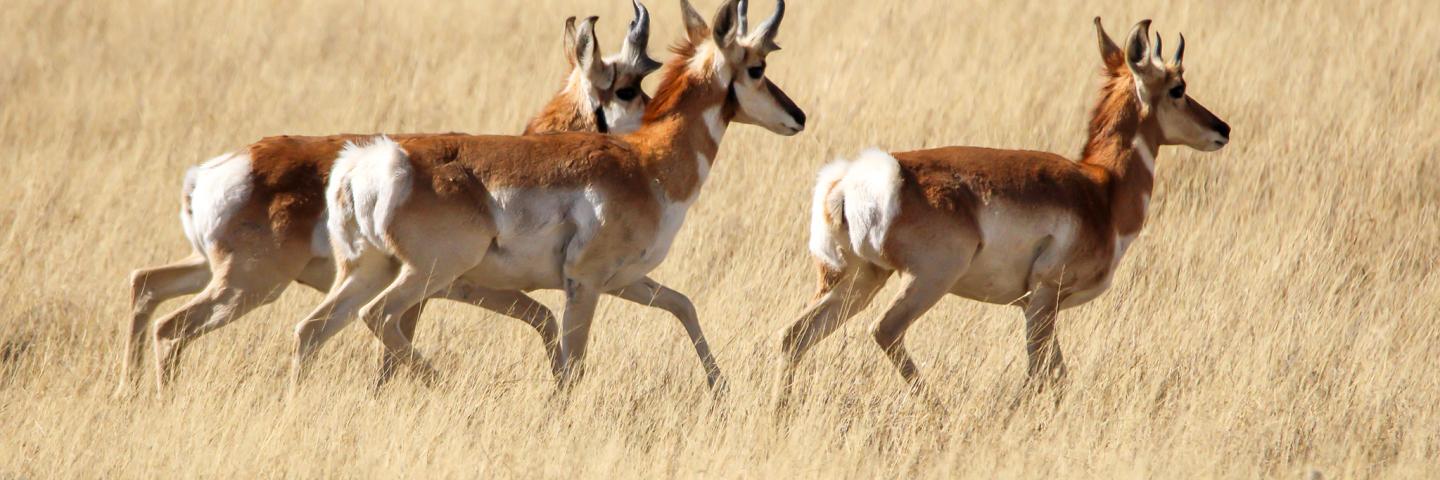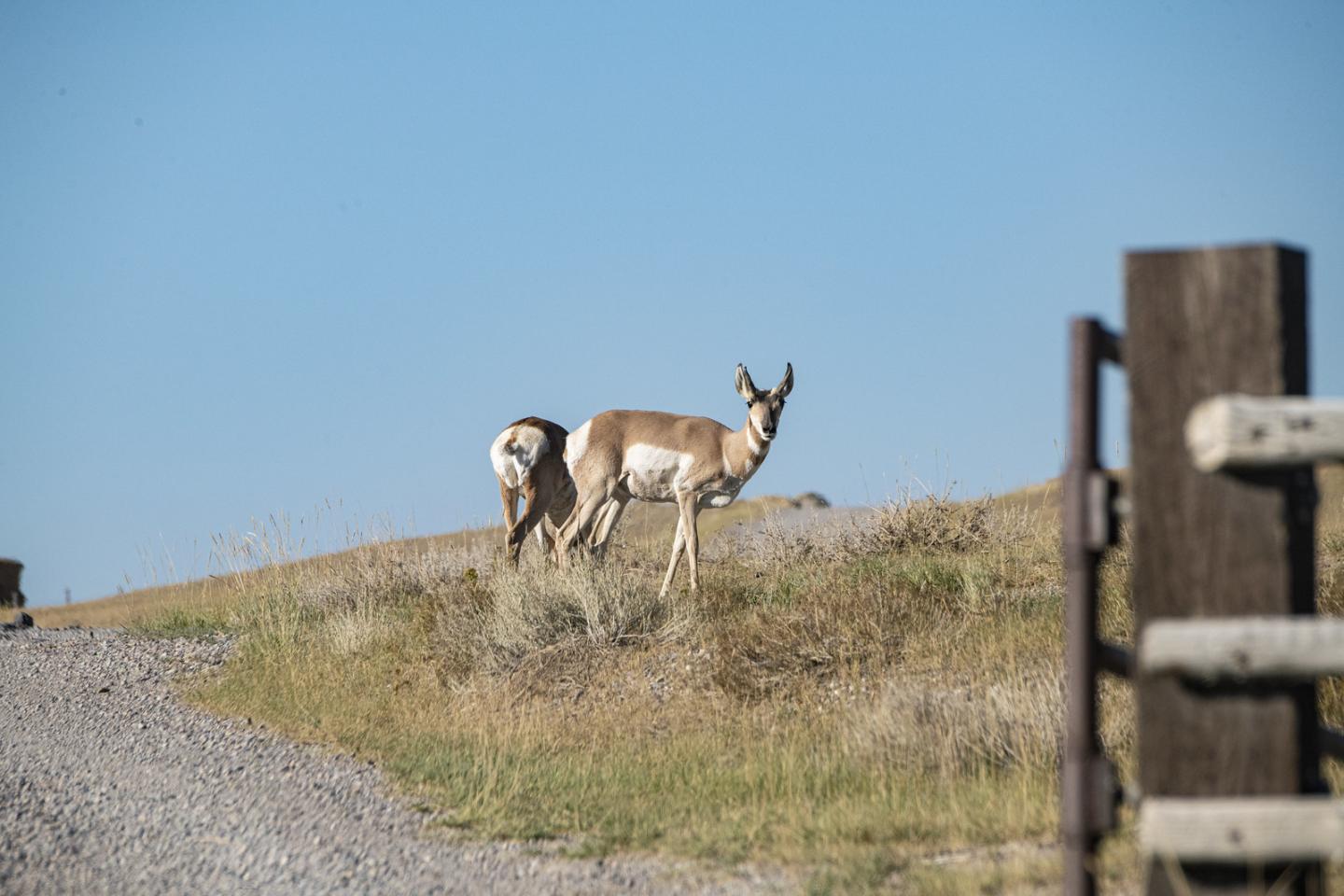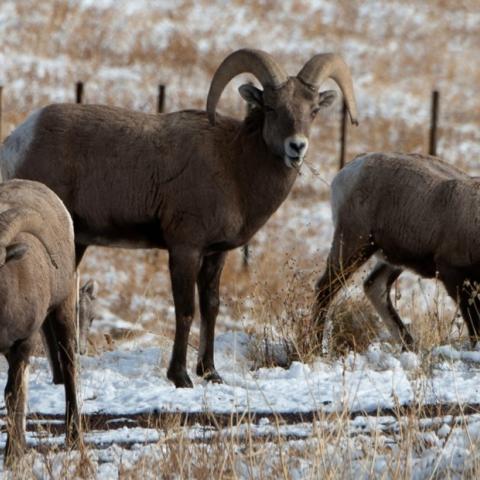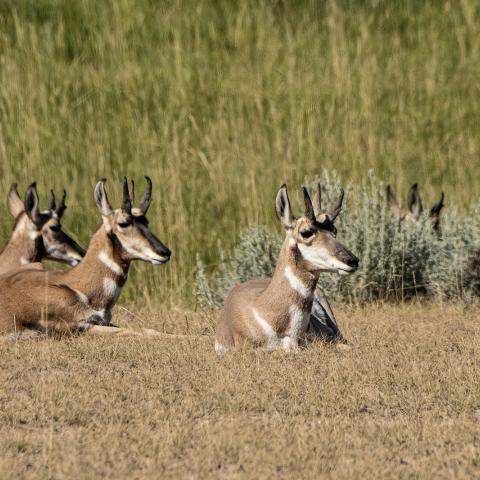
USDA is expanding its partnership to support the voluntary conservation of private working lands and migratory big game populations from Wyoming to Idaho and Montana.
USDA’s Migratory Big Game Initiative provides a new package of investments in key conservation programs for fiscal year 2024, which includes funding to support increased staffing capacity and the deployment of streamlined program application processes for agricultural producers and landowners. Producers in Wyoming, Idaho and Montana will be able to apply for conservation programs offered by USDA’s Natural Resources Conservation Service (NRCS) and Farm Service Agency (FSA) that meet their unique needs starting in the fall of 2023.
USDA is focusing on using voluntary and incentive-based programs to target assistance on the following:
-
Agricultural Land Protection: NRCS is investing additional dollars in Agricultural Conservation Easement Program (ACEP) funding to use towards permanent conservation easements on important habitats within migration corridors. ACEP assists producers who want to protect sensitive landscapes and prime farmlands from conversion to non-compatible land uses such as residential subdivision through establishment of long-term conservation easements.
-
Restoration, Enhancement, and Management: NRCS is investing additional dollars in Environmental Quality Incentives Program (EQIP) funding to prioritize practices that restore and manage habitats migrating big game need. Some examples include fence conversion, invasive species treatments, aspen regeneration, and wet meadow restoration. EQIP focuses on integrating practices on working lands, such as prescribed grazing systems and cheatgrass control.
-
Grassland CRP: USDA’s Farm Service Agency (FSA) is utilizing the Grassland Conservation Reserve Program (Grassland CRP) to provide up to 15 years of development protection for other properties while still allowing other compatible uses.
Package of Opportunities for Producers
USDA will offer producers a package of opportunities they can choose from to meet their operations’ unique needs. Programs include the Environmental Quality Incentives Program (EQIP), Agricultural Conservation Easement Program (ACEP) and Grassland Conservation Reserve Program (Grassland CRP) and will be available across a wide range of lands including grasslands, shrublands, and forested habitats located on tribal and privately owned working lands.
For fiscal year 2024, NRCS has provided Wyoming, Montana and Idaho with $21.4 million in dedicated funding to kickstart the new Migratory Big Game Initiative.
How to Apply
NRCS accepts applications year-round, but producers should apply by their state’s ranking dates to be considered for funding in the current cycle. Funding is provided through a competitive process. If you apply after the program ranking date, NRCS will automatically consider your application during future funding cycles.
The pilot is open to producers statewide, but there are several priority areas where big game migrations are known to be prevalent. Producers should contact their local USDA Service Center to discuss how their property aligns with these priority areas.
Climate-Smart Activities
The Migratory Big Game Initiative advances USDA’s efforts in climate-smart agriculture, and it’s funding is bolstered by the Inflation Reduction Act. Recently, NRCS expanded the Climate-Smart Agriculture and Forestry Mitigation Activities that qualify for funding through the Inflation Reduction Act, and several of those are critical to this initiative, including brush management, prescribed burning and herbaceous weed treatment.
Building on Success in Wyoming
The Wyoming pilot for this initiative was first announced in May 2022. The initiative leverages and compliments other ongoing conservation efforts on working lands such as those conducted under the Working Lands for Wildlife’s (WLFW) Framework for Conservation Action in the Great Plains Grasslands and Sagebrush Biome, unveiled in 2021 by USDA. Both efforts emphasize a commitment to voluntary, incentive-based approaches; identifies and elevates the critical role of private, working lands; and stresses the importance of supporting state, tribal, and landowners to advance their conservation priorities. The initiative also further focuses FSA’s commitment to assisting producers in protecting and maintaining grasslands through grazing and for supporting plant and animal biodiversity within National Priority Zones.
Accomplishments so far include:
- A $11 million EQIP investment resulted in 97 new contracts that conserved 307,713 acres. Primary practices were obstruction removal, fence and herbaceous weed treatment. These practices were used to remove unnecessary and/or non-wildlife friendly fencing, replace with new wildlife friendly fencing and to treat invasive annual grasses degrading otherwise healthy sagebrush rangelands, primarily cheatgrass.
- A $10 million ACEP investment provided funding for 17 conservation easements that perpetually maintain 11,830 acres of working lands as open space available to migrating wildlife and prohibit conversion to non-compatible land uses like housing subdivisions.
- NRCS hired 2 Rangeland Management Specialists and are currently in the process of hiring a Big Game Coordinator and 2 Area Biologists specifically tasked with helping to deliver the program. FSA hired additional staff in Wyoming to help increase program awareness and producer interest.
- Ranchers in Wyoming responded to Grassland CRP opportunities in 2023 by increasing the number of offers in the signup by 30% when compared to the signup in 2022. Twenty-five percent of signup in 2023 accepted offers in Wyoming are in the big game corridor priority area which is up from 10% in signup in 2022.
- Grasslands CRP enrollment increased within big game priority areas:
- Over 147,000 acres accepted statewide (2023), 25% in priority area (over 37,000 acres)
- Over 135,000 acres accepted statewide (2022), 11% in priority area (over 14,000 acre)
- Over 186,000 acres accepted statewide (2021), 10% in priority area (over 19,000 acres)
- Over 75,000 acres accepted statewide (2020), 2% in priority area (1,700 acres)
- Within the priority area, Grassland CRP participants are offered:
- A cost share for grazing infrastructure such as interior fence and watering systems
- A higher minimum annual rental rate of $18 per acre per year, compared to $13 for participants outside of the priority area
- NRCS provided $300,000 to the University of Wyoming (through Dr. Jerod Merkle, Assistant Professor, Department of Zoology and Physiology) to provide dedicated technical and science support, which is specifically directed to NRCS Wyoming, Wyoming Game and Fish Department (WGFD), and other partners related to this pilot project.
- Through a $500,000 grant, FSA is partnering with the University of Wyoming's Haub School of Natural Resources and Environment to explore the potential for the Grassland Conservation Reserve Program to help conserve ungulate migration corridors in the West. Objectives of this project are to evaluate the current delivery of Grassland CRP and identify potential improvements with respect to social and ecological outcomes.
- NRCS provided $100,000 through the Conservation Effects Assessment Project Agreement to evaluate wildlife friendly fence effectiveness through Dr. Derek Scasta at the University of Wyoming.
- To ensure latest science and experience was incorporated into delivery, NRCS West National Technology Support Center (WNTSC) worked with partners and led creation of a technical note for wildlife friendly fencing. The Technical Note will be released in 2024.
Resources
- Fact Sheet: USDA Migratory Big Game Initiative (PDF) November 2023
- Fact Sheet: USDA-Wyoming Big Game Conservation Partnership (PDF) April 2023
- Map: Wyoming Big Game Priority Areas for FY2023 (jpg)
- Video: USDA Formalizes Big Game Partnership with Wyoming
- Farmers.gov: Wyoming Big Game Conservation Partnership Pilot
- Farmers.gov blog: Saving Time, Money and Wildlife through Conservation Practices

USDA Formalizes Big Game Partnership with Wyoming
The U.S. Department of Agriculture and the state of Wyoming formalized a partnership to support the voluntary conservation of private working lands and migratory big game populations in Wyoming.



